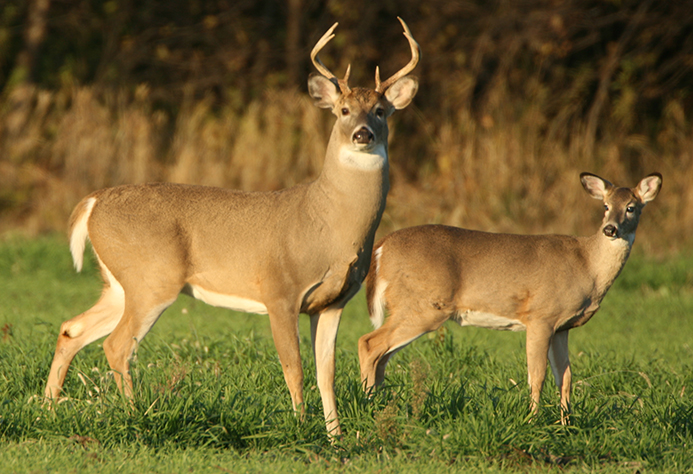
by Bill Schlesinger
Most folks who live in the eastern United States, particularly in New England, are likely to have experienced more than one close encounter with White-Tail deer. In recent years, insurance records suggest as many as 1.2 million collisions between deer and vehicles, costing over $7 billion in repairs. And, of course, anyone with an outdoor garden knows the frustration of fencing out deer, which like to eat the same vegetables that we do.
Now, a recent paper by Lior Greenspoon and coworkers documents the overpopulation of deer from a different perspective. Estimated globally, white-tail deer have the greatest overall population biomass of any wild mammal—exceeding that of many species on the plains of Africa. Forty-five million deer, which can exceed 300 pounds for a male animal, amount to 2.7 million tons of wet biomass worldwide. In the eastern United States, deer are found at densities sometimes greater than 40 per square mile. In the Southeast, deer populations have increased from about 200,000 in 1900 to more than 10 million in 2003.
Why the increase? Much of the land in the eastern U.S. is recovering from earlier logging, so that it is inhabited by colonizing trees that provide excellent cover and abundant food for deer—better than mature forest. At the same time, natural predators, like wolves, have been exterminated. Indeed, through hunting and automobiles, humans are really the only remaining predators of significance.
In what John Terborgh and his colleagues documented more than 20 years ago, when predators are eliminated from an ecosystem, the populations of herbivores, like deer, explode and overgraze the native vegetation. The familiar “browse lines” that are seen along the edge of woodlands and the absence of under-story vegetation in many areas, are the effects of abundant white-tail deer on the landscape. In many areas there is a complete failure of trees to regenerate in the under-story.
Various studies have found that deer help maintain large populations of ticks that plague casual hikers and others who work outdoors. And recently, serological studies have found that deer serve as a reservoir for SARS-COV-2, which could reinfect humans in the future.
When we manipulate one component of an ecosystem, such as predators, unknown consequences show up in other components—what Terborgh called “ecological meltdown.” Reducing the population of white-tail deer should be at the top of ecosystem management throughout its range.
References:
Almendinger, T., M. Van Clef, J.F. Kelly, M.C. Allen and C. Barreca. 2020. Restoring forests in Central New Jersey through effective deer management. Ecological Restoration 38: 246-256.
Chandler, J.C. and others. 2021. SARS-CoV-2 exposure in wild white-tail deer (Odocoileus virginianus). Proceedings of the National Academy of Sciences doi: https://doi.org/10.1073/pnas.211482811\
Greenspoon, L., et al. 2023. The global biomass of wild mammals. Proceedings of the National Academy of Sciences 120: https://doi.org/10.1073/pnas.2204892120
Hale V.L., et al. 2022. SARS-CoV-2 infection in free-ranging white-tailed deer. Nature 602:481-486.
Hanberry, B.B. and P. Hanberry. 2020. Regaining the history of deer populations and densities in the southeastern United States. Wildlife Society Bulletin 44: 512-518.
Kelly, J.F. 2019. Regional changes to forest understories since the mid-Twentieth Century: Effects of overabundant deer and other factors in northern New Jersey. Forest Ecology and Management. 444: 151-162.
Terborgh, J., et al. 2001. Ecological meltdown in predator-free forest fragments. Science 294: 1923-1926.